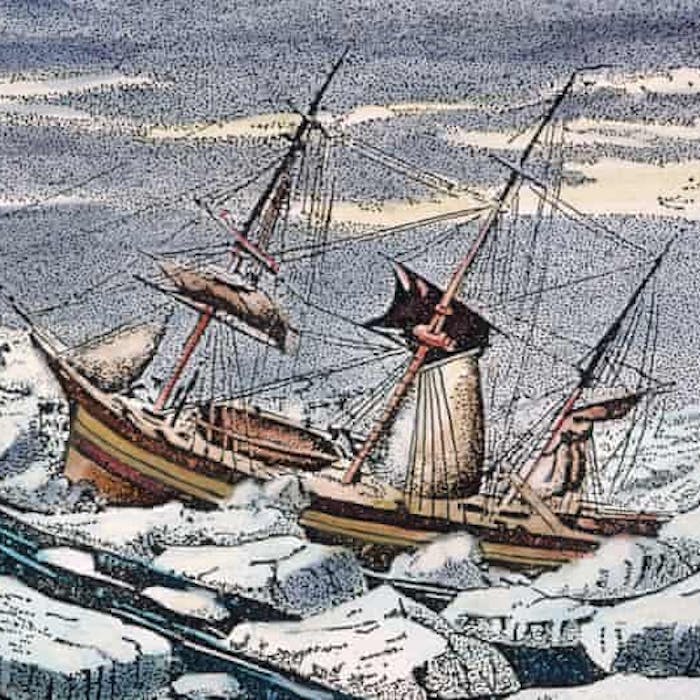
Franklin's tragic search for the Northwest Passage
Two well-equipped British ships, HMS Terror and HMS Erebus, left England in 1845 to search for the Northwest Passage from the Atlantic to the Pacific through the Arctic Ocean. But their expedition was ill-fated, and they were last seen in 1848, and all evidence of them vanished for nearly 170 years.
On 19th May, 1845, the HMS Erebus and HMS Terror, sailed out of the River Thames carrying 128 officers and men under the command of Sir John Franklin. Their mission was to locate and transit the fabled Northwest Passage, the long-sought pathway from Atlantic to Pacific through Canada’s ice-strewn Arctic inlets.
John Franklin was a well-known arctic explorer, and this was his fourth mission. He had almost starved to death on an overland expedition, and became known in the press as “the man who ate his boots” because he consumed his shoe leather to get out of the Arctic alive.
The two ships were well-fitted for polar exploration by the standards of the time, with iron-plated hulls and steam power as well as sail. They carried enough food for three years. Sir John Franklin sailed in Erebus, in overall command of the expedition, and Terror was commanded by Francis Crozier.
The ships were last seen by Europeans entering Baffin Bay in August 1845. Their disappearance set off a massive search effort. Eventually in 1853 Hudson's Bay Company doctor John Rae collected artefacts and testimony from local Inuit to explain their loss, and later expeditions confirmed these reports.
Both ships had become icebound and abandoned by their crews. All the men died from a variety of causes, including hypothermia, scurvy and starvation while trying to trek overland to the south. Subsequent expeditions until the late 1980s, and autopsies of crew members buried in the frozen soil, also revealed that the crew's canned rations may have been tainted by both lead and botulism.
Oral reports by local Inuit that some of the crew members resorted to cannibalism horrified the Victorians, but seem to be supported by forensic evidence of cut marks on the skeletal remains of crew members found on King William Island during the late 20th century.
In 2008 a Canadian team began to search for remains of the two lost ships - greatly aided by local historian Louie Kamookak, who had collected Inuit oral histories and studied the written records. The sunken wreck of the Erebus was discovered in September 2014 and the Terror in September 2016.
Exploration of these well-preserved wrecks slowly continues and more to this story may be revealed in time.
The painting above is HMS 'Erebus' in the Ice, 1846 by François Etienne Musin.
Further reading
Links to external websites are not maintained by Bite Sized Britain. They are provided to give users access to additional information. Bite Sized Britain is not responsible for the content of these external websites.
